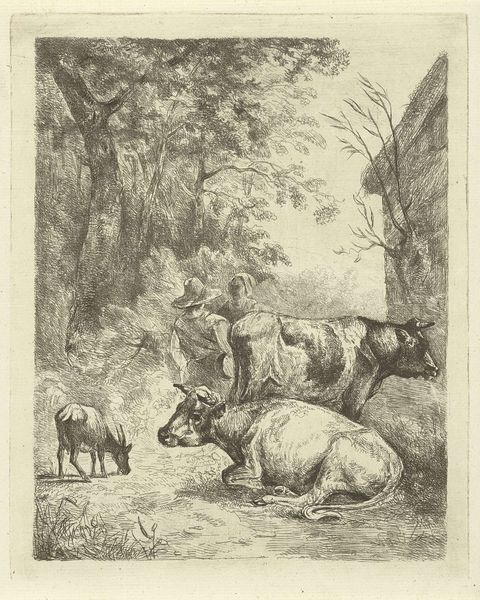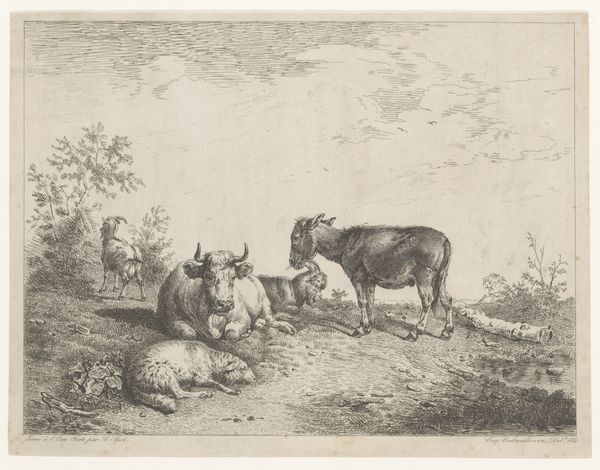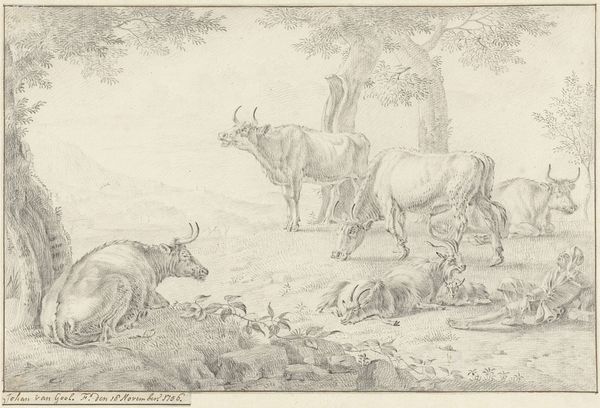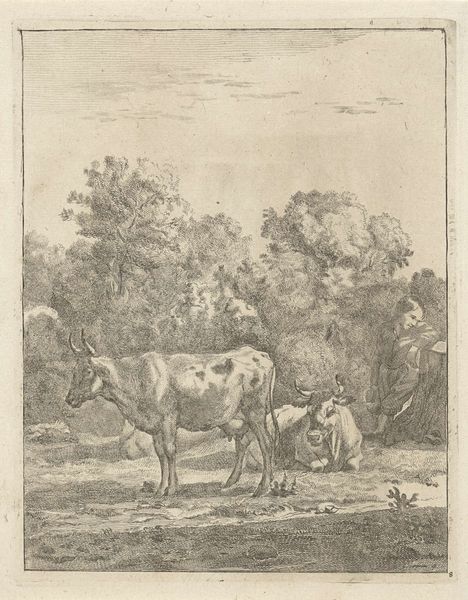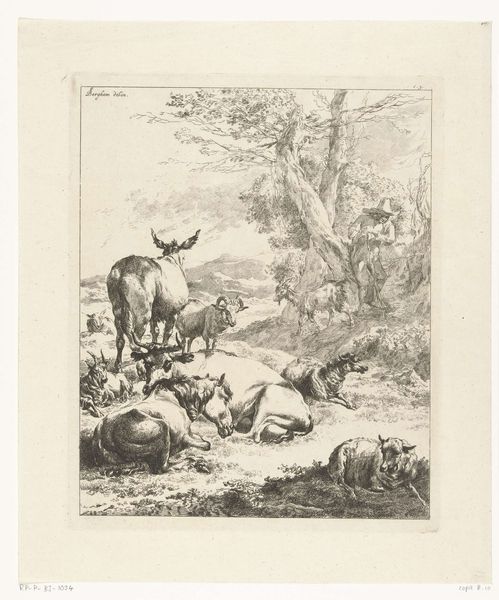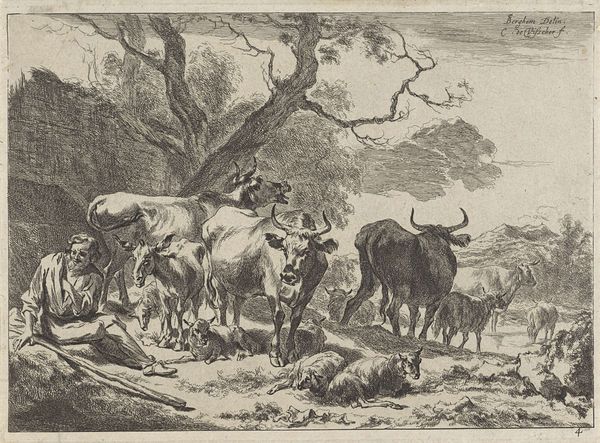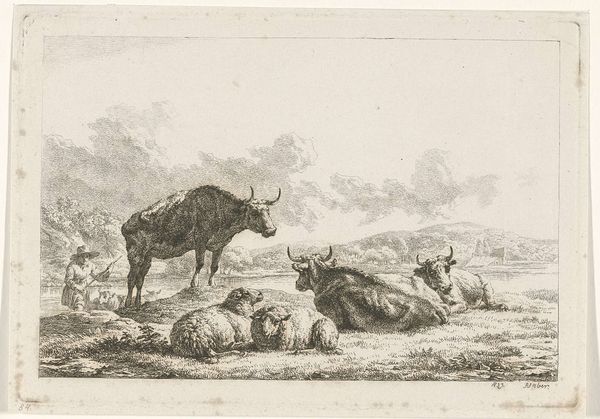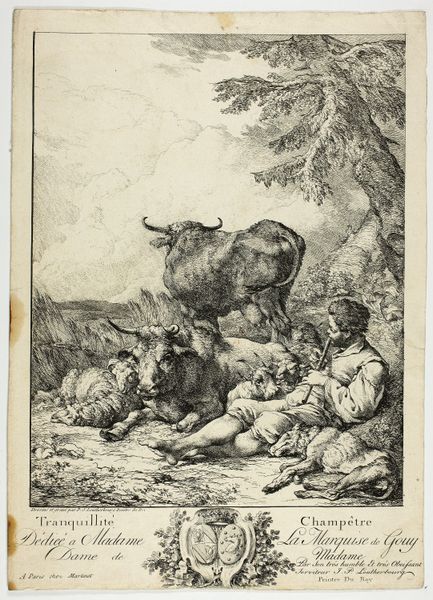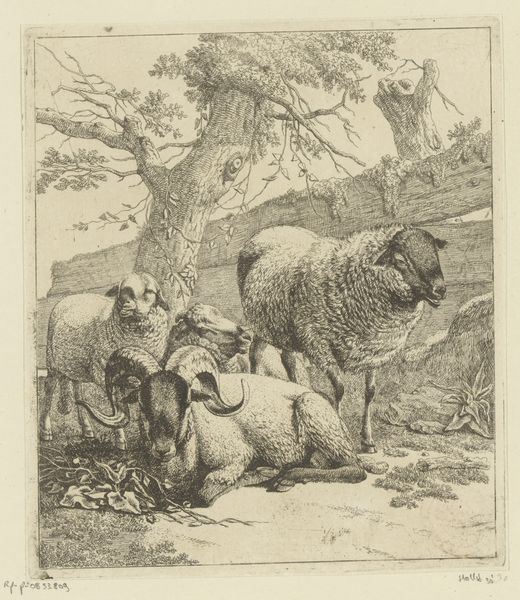
drawing, print, etching
#
drawing
#
16_19th-century
# print
#
etching
#
landscape
#
genre-painting
#
realism
Dimensions: height 200 mm, width 160 mm
Copyright: Rijks Museum: Open Domain
Curator: This is Antonie Franciscus Dona’s "Boerenerf met twee koeien, een bokje en een pratend stel" – "Farmyard with two cows, a goat and a talking couple" – etched in 1853. It captures a simple pastoral scene. What strikes you about it? Editor: It feels so still, almost melancholic. The light is soft, diffused. There's a real sense of quiet labor and the peace of rural existence… though the couple breaks the silence, I suppose! Curator: I'm interested in that couple, actually. Note how Dona includes figures—their postures almost blend into the trees and barn—that represent both industry and domesticity. In the genre scenes typical of Dutch painting, domestic scenes are rarely about labor itself but also a place where people form their morality, character, and their sense of citizenship. Editor: And there's a definite contrast to that, right? These farm animals appear to dominate the center, drawing attention away from any human concerns. Perhaps it comments on human relationship to nature as something subservient in reality versus cultural imagination. Curator: A plausible reading. Cows in art often represent fertility, abundance, and even patience. They ground the scene—quite literally! Also the use of etching here provides incredibly delicate texture, mirroring details of rural landscape Editor: I also wonder about this composition. The animals create almost a barrier between the couple in the background, barely registering a hint of what's been said in hushed voices... Is the idyllic vision somehow deliberately isolated, or obscured? How should this affect contemporary viewings? Curator: That might be a romantic over-interpretation! In general, such images reinforced societal ideals and norms; etching itself made the visual culture accessible across society, embedding symbolism deeper. But such accessibility to genre images could very well contribute, in part, to the societal values which later triggered different reform movements, in terms of industrial and post-industrial ecologies. Editor: An excellent point – to read this etching beyond surface is imperative! What initially appears as a passive vista subtly underscores both idealized themes of agricultural and familial life. Curator: Indeed. There is always so much happening in apparently quiet images! Editor: Precisely why we keep looking.
Comments
No comments
Be the first to comment and join the conversation on the ultimate creative platform.
